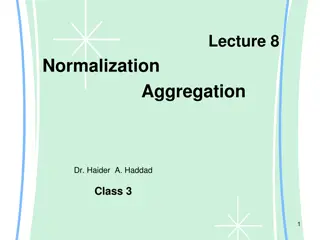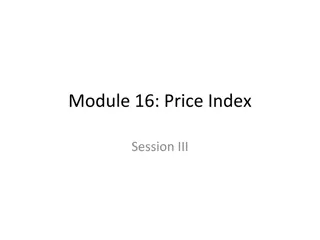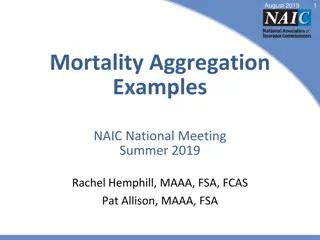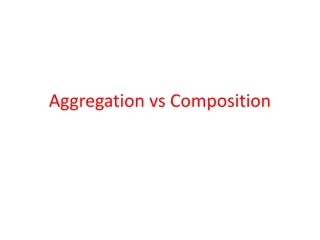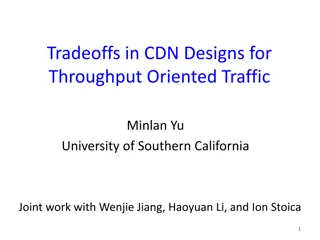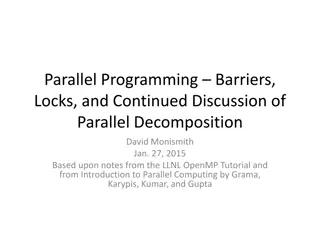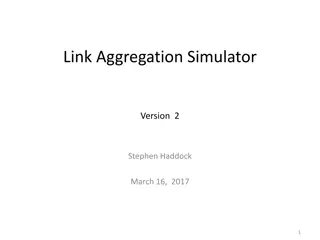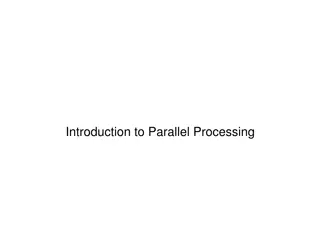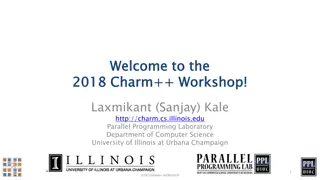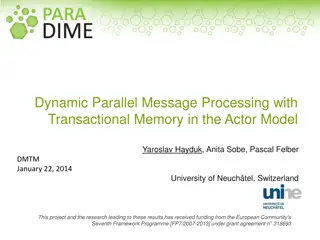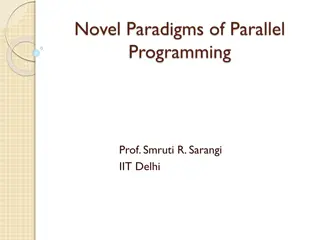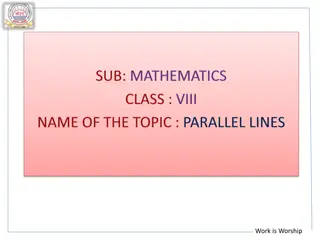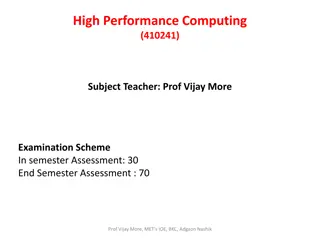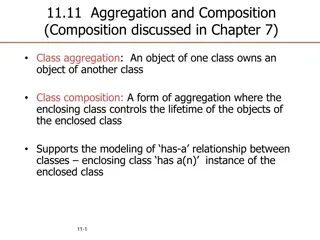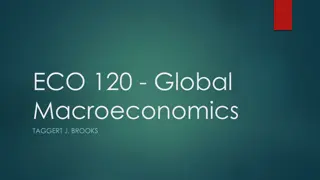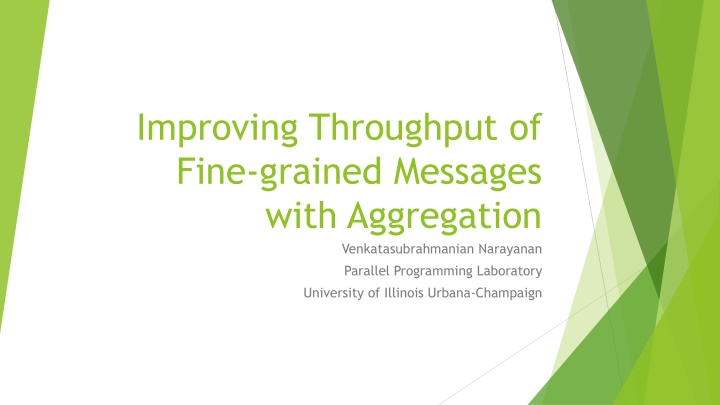
Enhancing Message Throughput via Aggregation in Parallel Programming
This research delves into improving the throughput of fine-grained messages by employing aggregation techniques. It focuses on the Topological Routing and Aggregation Module (TRAM) as a solution, illustrating enhancements and future prospects in Charm++ 6.10. Various benchmarks, examples, and features are discussed, shedding light on the optimization of point-to-point communication and message handling.
Download Presentation

Please find below an Image/Link to download the presentation.
The content on the website is provided AS IS for your information and personal use only. It may not be sold, licensed, or shared on other websites without obtaining consent from the author. If you encounter any issues during the download, it is possible that the publisher has removed the file from their server.
You are allowed to download the files provided on this website for personal or commercial use, subject to the condition that they are used lawfully. All files are the property of their respective owners.
The content on the website is provided AS IS for your information and personal use only. It may not be sold, licensed, or shared on other websites without obtaining consent from the author.
E N D
Presentation Transcript
Improving Throughput of Fine-grained Messages with Aggregation Venkatasubrahmanian Narayanan Parallel Programming Laboratory University of Illinois Urbana-Champaign
Agenda Motivation TRAM s interface What s new in Charm++ 6.10 Future work
Whats the problem? Point-to-point messages are general-purpose Need to be independent of each other Unnecessary per-message cost
The existing solution Topological Routing and Aggregation Module(TRAM) Combine messages headed in the same direction Easy drop-in solution
Whats the difference? The default approach: vs TRAM:
Example Drop-in replacement *
Aggregation policy illustrated Flush when buffer fills up Flush on timeout
Routing Virtual grid topology
Feature limitations(prior to release) Support only for 1D chare arrays and groups Messages must be fixed size
New feature updates Charm++ 6.10 adds support for multidimensional chare arrays Future release: Variable sized messages Tunable parameters
Future aggregation policy Flush on reaching threshold Flush on timeout (same as earlier) Send messages larger than cutoff directly
Use cases? Generalized stencil computation Graph algorithms Any communication-heavy application
Future work Improve current implementation Support for more computational topologies

